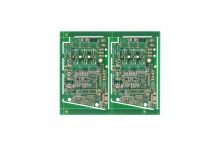Other Design Considerations
Trace lines should be kept as short as possible and reduce lengths wherever possible. If the trace lengths are fairly long, terminations should be used to prevent reflections.
Routing stubs and discontinuities, which add to the reflections and degradation of the signal quality, should be avoided.
For differential pair routing, try and ensure that the signal pairs have the same length.
Use of back drilling – for a thick backplane where the signal goes from the top layer to one of the inner layers, the remainder of the copper barrel of the via or the pin of the press-fit connector will be a stub, resulting in reflection. Back drilling removes the unwanted copper. It is a technique used to remove the unused portion, or stub, of the copper barrel from a thru-hole in a printed circuit board.
Consider using immersion silver as a surface finish rather than ENIG. Immersion silver results in less insertion loss (lossy) than ENIG purely because the nickel content in ENIG is very lossy and due to the skin effect, it is not very good for high-speed designs. The flatness of the pad is just as good as ENIG and it is more workable than ENIG.
Reduce the size of antipads on plane layers. Antipads are where pads are removed, or copper is removed on plane layers where the pad should not or does not connect to that plane. Sometimes the anti-pad size is too large creating unnecessary voids in the plane. By making the anti-pad a little bit smaller allows for more plane continuity resulting in a cleaner signal and return path.






















